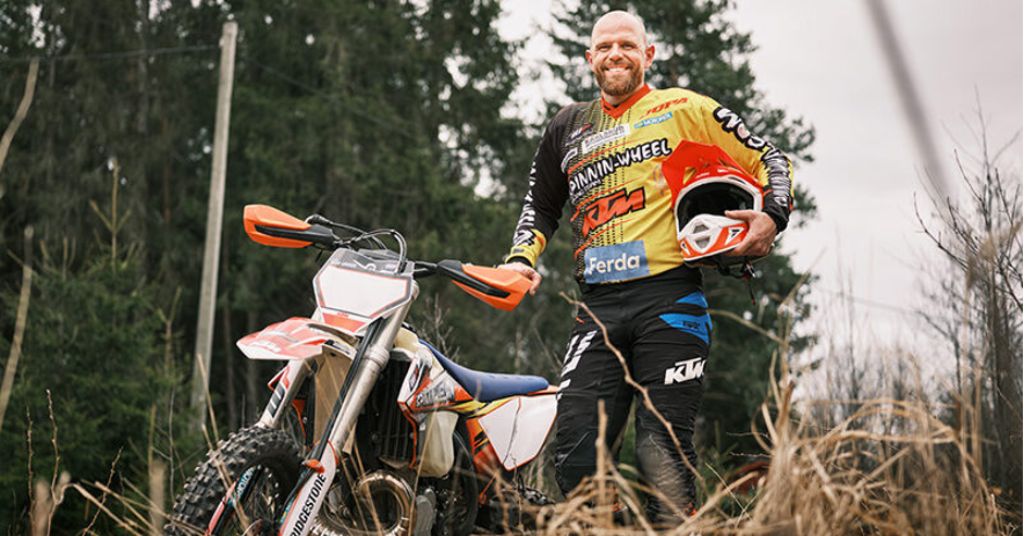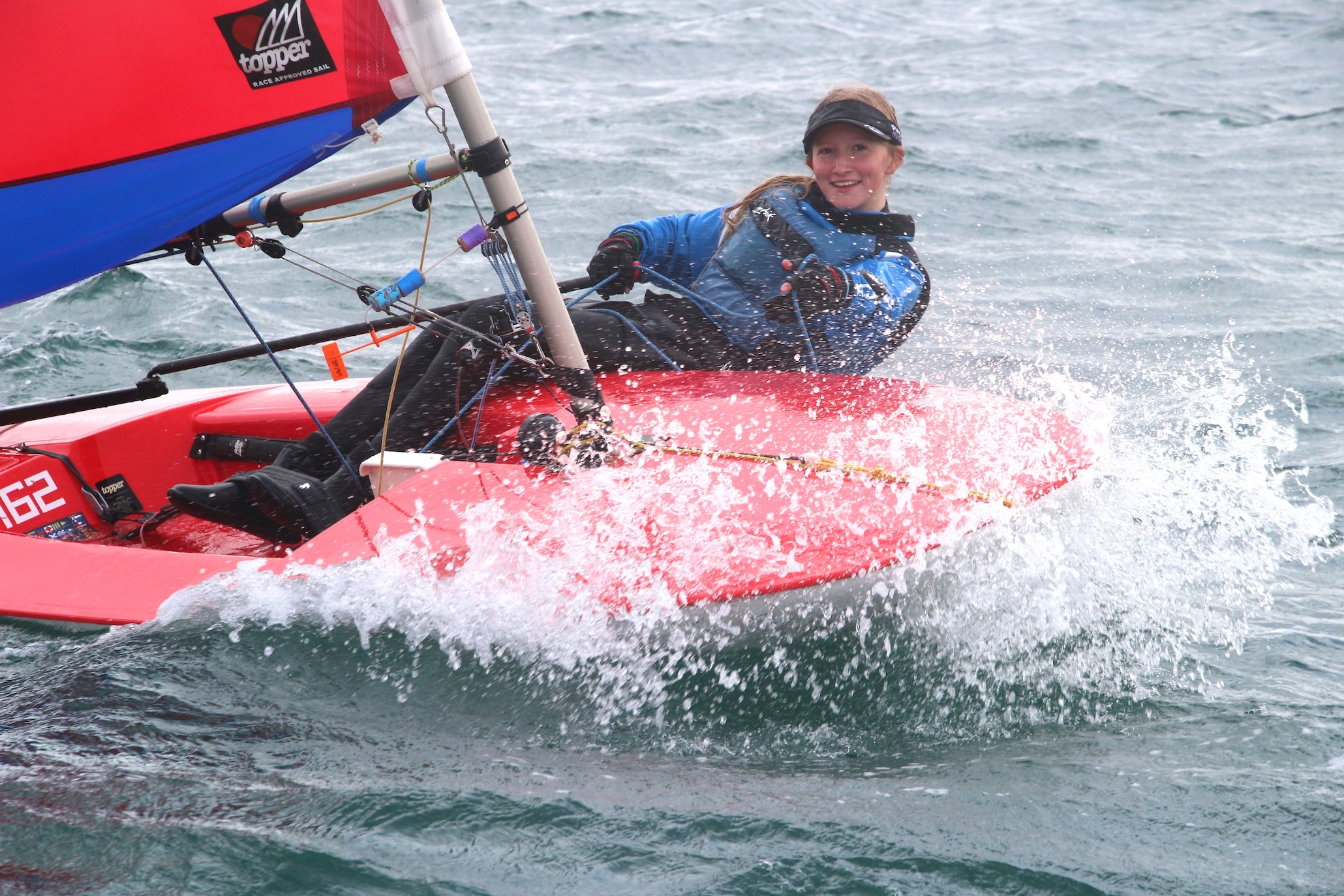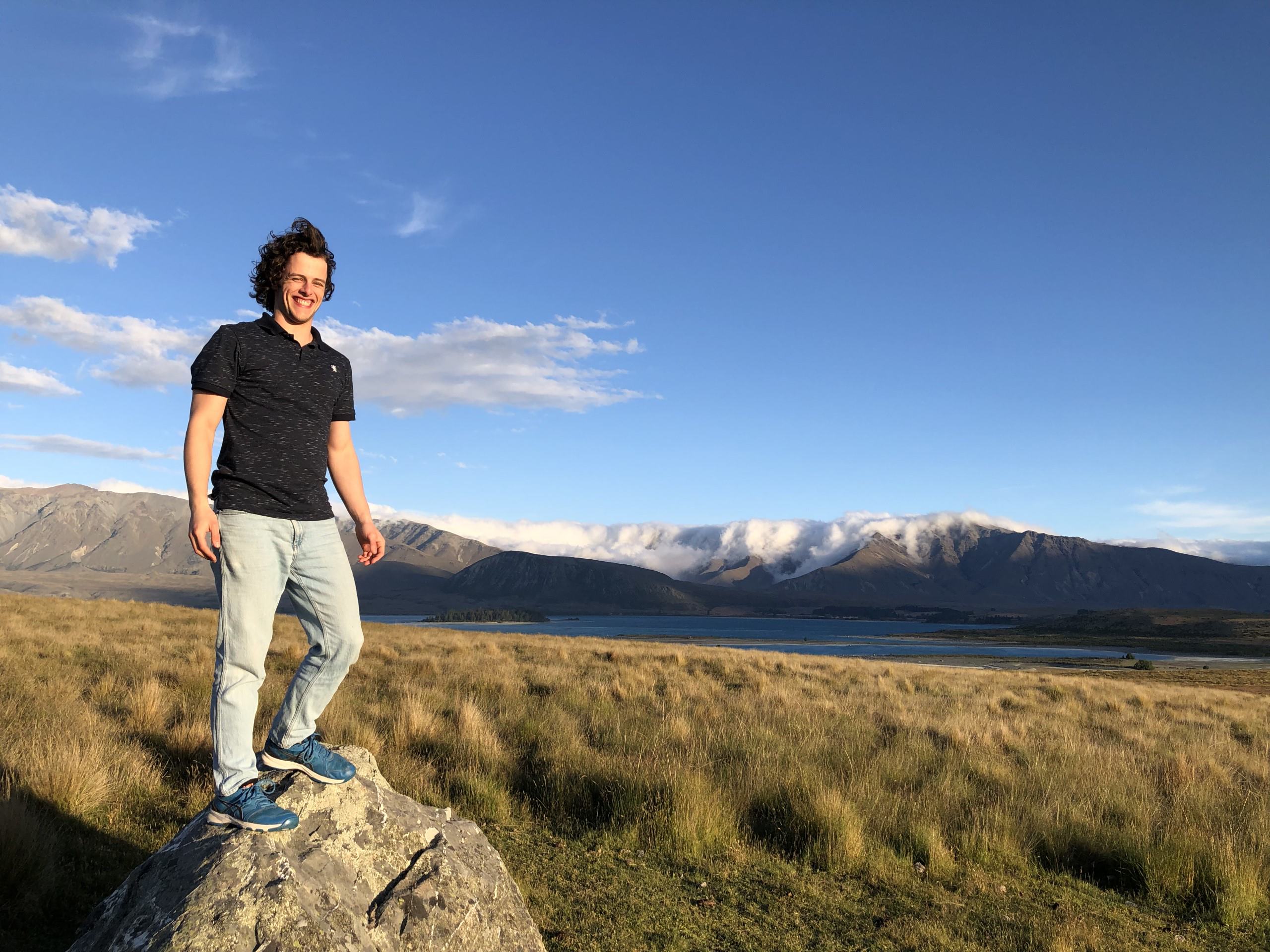Phonak Introduces Slim Lumity Hearing Aid
April 19, 2023UK Deaf Awareness Week 2023
May 1, 2023“You can actually live a cool life with hearing loss”

There’s a buzz, hum, throttle and screech – as if you were on a motocross track. As spectators, we see motorbikes whizzing by at high speed. With the pulse pounding a little faster than usual, we can conclude that motocross lives up to expectations: This is definitely not a sport for sissies.
The man on one of the bikes is André Wold Larsen. André is one of Norway’s best Enduro athletes and, behind his tough helmet, he hides a warm smile and an engaging presence. There’s no doubting that he loves what he does.
Only 10% hearing is no obstacle
The road to becoming an Enduro pro has presented some extra challenges for the 34-year-old from Skiptvet in the Norwegian countryside region of Indre Østfold. Already when he was in kindergarten, André’s hearing was noticed as being slightly worse than the other children’s. A hearing test indicated that he was right on the borderline for needing hearing aids. For a few years, things were fine, before his hearing suddenly and drastically deteriorated at the age of 11.
“Nobody knows the reason why this happened,” he says. “After this, my hearing has remained stable but very low. I have hearing loss that averages 90 dB, which means I am theoretically deaf.”
André goes on to say that, in practice, this means that, without hearing aids, he would hear about 10% of what normal hearing people do. Speech and language come from when he was little and could hear better.
“That’s how I learned some variation in voice pitch,” he says. “If I had been born with this hearing loss, you would hear much more clearly how bad my hearing really is.”
A new life with new hearing aids
A few months ago, André received his new hearing aids, the Phonak Paradise. He says that there are many things in his life that work better now since he has replaced his old hearing devices.
“They have taken me up quite many notches, and there are many things I couldn’t do before that I can do now,” he says. “With the old hearing aids, I could just forget about restaurants, canteens, meeting rooms, etc. I was immediately left out. Now it’s almost the exact opposite, that I hear just as well, or better than those around me. Especially if I use them in combination with the Roger On microphone.”
He also highlights the possibility to connect the hearing aids directly to his phone.
“Now I can listen to both podcasts and music, which I’ve never been able to do before! That’s cool,” he says.
André enthusiastically goes on to talk about the impact the Bluetooth feature has had on his daily life. Previously, all communication had to be in writing, preferably by SMS, and he could not call his family, colleagues or friends over the phone. He can do that now! He often uses Facetime, which allows him to lip-read to supplement the sound he hears. To give an idea of what this means to him, he provides an example that highlights the limitations his hearing had previously placed on his independence:
“It’s not fun to be 34 years old and need help booking a doctor’s appointment,” he says. “With the new hearing aids, I can finally make my own calls.”
“It’s not fun to be 34 years old and need help booking a doctor’s appointment,” he says. “With the new hearing aids, I can finally make my own calls.”
I can’t hear everything
As André’s hearing loss is so severe, hearing aids and assistive devices will not give him 100% hearing. He explains that he understands around 70-80% of what is said and that it can be difficult for others to understand that he doesn’t always understand everything.
“I’m glad I can communicate with others, but at the same time it’s hard for people to realise how bad my hearing really is when they don’t see it on me,” he says. “It was much more difficult for me to communicate before I got the new hearing aids. 1% better hearing for me means a lot.”
“1% better hearing for me means a lot.”
Even though we are the ones interviewing André, he has a way of listening and watching you that demonstrates a genuine interest in the people he meets. There’s a confidence in his eyes that quickly puts you at ease and makes it easy to talk to him.
“People have told me that they think it’s really cool to talk to me because I’m so interested to hear what they have to say,” he says. “Then it’s a shame if they give up just because I didn’t hear everything they had to say at the first try.”
Enduro: A ‘slightly dangerous’ sport

Although André is a long way from retiring from motorcycling, he already has an impressive career to look back on. He was on the national Enduro team for 7 years, until in 2022 he turned down the opportunity to pursue something called Extreme Enduro on his own. His major goal is to complete the world’s toughest Enduro race, the ErzbergRodeo, which is held in Europe’s largest iron mine in Austria. If he succeeds, he will be the first Norwegian to do so.
Enduro means ‘endurance’ and differs from regular motocross (which is held on a track) in that you ride on challenging terrain/outland. Races can last anywhere from 10 minutes to 10 hours. The norm is 2-3 hours, which is long enough to put athletes’ endurance to the test. There are many varieties of Enduro, and the most famous Enduro race is the Dakar Rally.
Combining hearing aids and Roger On
Before riding, André always takes off his hearing aids before putting on his helmet.
“It gives a sense of freedom,” he says. “I’m not thinking about the hearing loss. It’s just me and the bike.”
Outside of driving, he naturally has a greater need to hear what is being said. His teammate from the national team, Håkon Nohr, tells us that the new hearing aids have come in handy in communication: “Now we can actually call one another! That wasn’t possible before. And he gets almost everything I say,” Håkon smiles. The two have shared countless hours in a campervan together, and over time have become well acquainted – for better or worse!, Håkon adds with a laugh.
If André stands a bit away from his teammates, or the coach, he can use the Roger On microphone together with the hearing aids. Then he can, for example, attach it to his friend, or use the pointing function and point it at the person he wants to listen to.
Read more: Why we use the Phonak Roger On
Combining work and a sporting career
André works as an electrician at Moss Elektro, in a switchboard workshop. They are provided with drawings there, which means that André doesn’t have to rely on verbal instructions all the time to complete his work. In the past, group discussions and meetings were challenging for him, so he largely avoided them. This changed when he was given Roger microphones in February 2022, which have had a major impact on his working life:
“One of my dreams was to be able to take part in a group discussion, and now I can!”
When we visited André at his workplace, we could see how he uses the assistive devices in practice during the course of a working day. In the morning meeting, he puts a number of Roger Table Mic II on the table, so that he can hear what all the colleagues around the table are saying. If one of them stands up to present something, he also hangs a Roger On around the presenter’s neck. In this way, he can get the voices of absolutely everyone in the room.
He also uses Roger On during breaks, when he can point it at the person he is talking to at the coffee machine, or he can place it on the lunch table if they are in a small group chatting together.
Although everything works well now, his choice of career has not been as open as it is for most of us.
“There have been many jobs I have not been able to choose due to my severe hearing loss,” he says. “Especially jobs that require a lot of communication over the phone. Before I got these hearing aids, I couldn’t talk to anyone on the phone. Not even my mother.”
André says that it used to be unthinkable to communicate with a customer over the phone. This also made him reluctant to take on tasks with a lot of customer contact. Now, with the support of Facetime, he can call the customer without worrying about not being able to hear.
Read more: Tips for working with an employee with hearing loss
A lot of sacrifice
André has 100% combined work with his commitment to the national team. This naturally leaves little time for much else. When we ask him if he has had to sacrifice a lot, he immediately answers “yes”. He adds, “If you do something 70%, you won’t be the best. You have to do it 90-100%, and then your life is formed accordingly.”
Even though we have just got to know him, we can confirm that André puts 100% effort into Enduro.
“I have spent many long evenings alone in the workshop working on my bike,” he says. “I have to turn down a lot of things and I’m broke all the time. All of my money goes into this. I think many athletes can relate to that.”
A role model
In addition to spending countless hours on his own sports career, he also makes time to help children and young people at the club he belongs to, Moss MC-Klubb. Here all children and young people are welcome, and the club also has a separate group for children with different disabilities.
At these meetings, they ride motocross, quad bikes and “tinker bikes”. André acts as a kind of coach and mentor, and, during our visit, we can see that he is also an important role model for the children.
André says that he never had anyone with hearing loss to look up to when he was young.
“There are so many people who are hard of hearing, yet you rarely hear about them,” he says. “Especially in the sports world, I had no role models with hearing loss to look up to. So by signing up to this, maybe I can be that for someone else?”
Helping to break down stigma
The rugged Østfoldian makes no secret of the fact that it hasn’t been, or isn’t, easy to not hear well. He doesn’t like being a burden, and still has a way to go before he’s comfortable asking everyone to wear a microphone – but adds that it gets easier the more positive experiences he has. André admits that he has largely experienced hearing loss as a stigma, and that this has been particularly evident to him when he has repeatedly heard the words “never mind”.
He goes on to describe how stigma can make it difficult to become comfortable with having a “disability”:
“Deep down you don’t want to be different, but I’m reminded of that every morning when I get up. The only good thing is that I sleep like a log,” he says with a smile.”
André has an infectious smile, but quickly turns serious again when we ask him in closing if there is something in particular he would like to convey. He wants others to not feel the same stigma as he has:
“The reason I want to tell my story is because I want to help break down the stigma.” To show that you can follow your dreams even if you have hearing loss and that you can actually live a cool life.”





